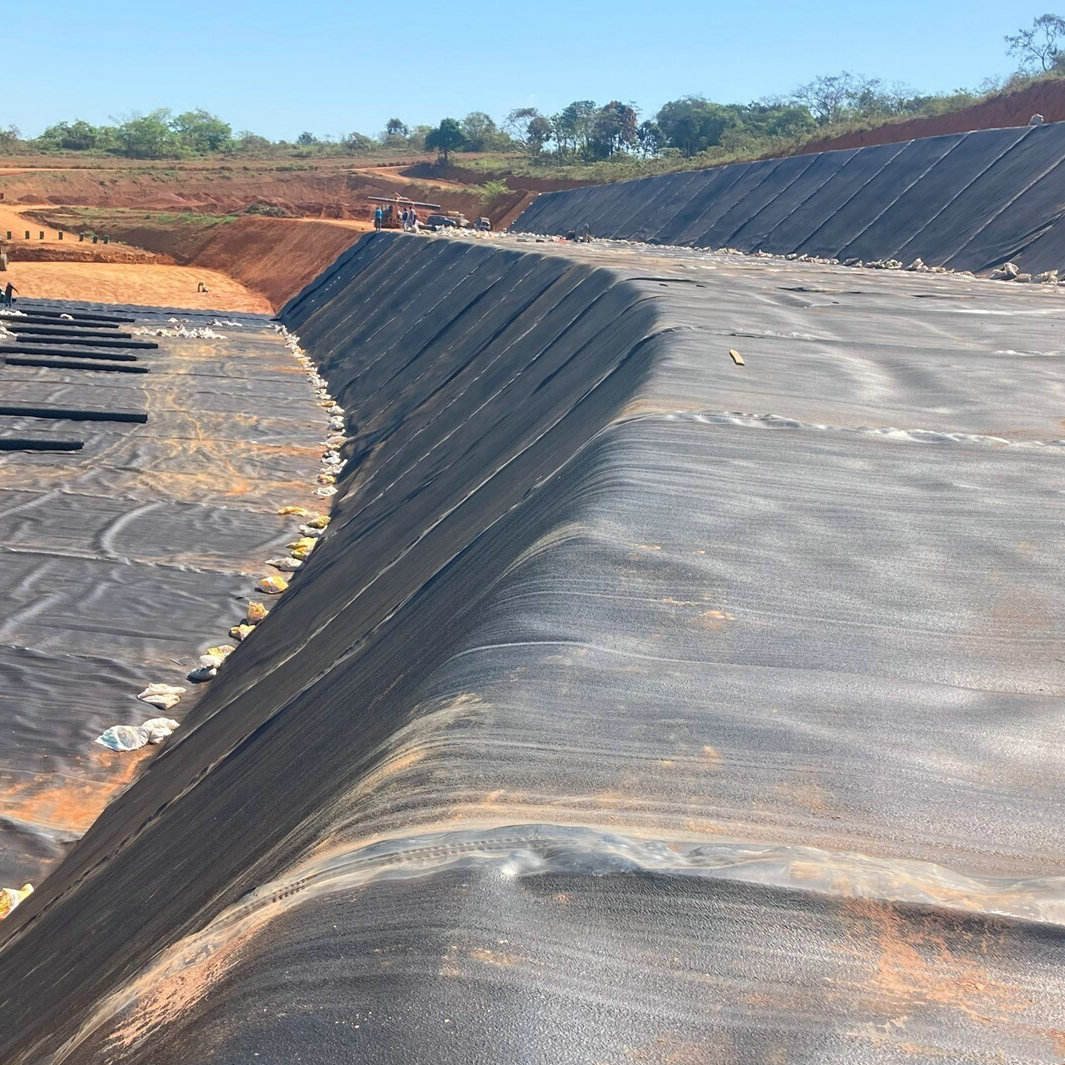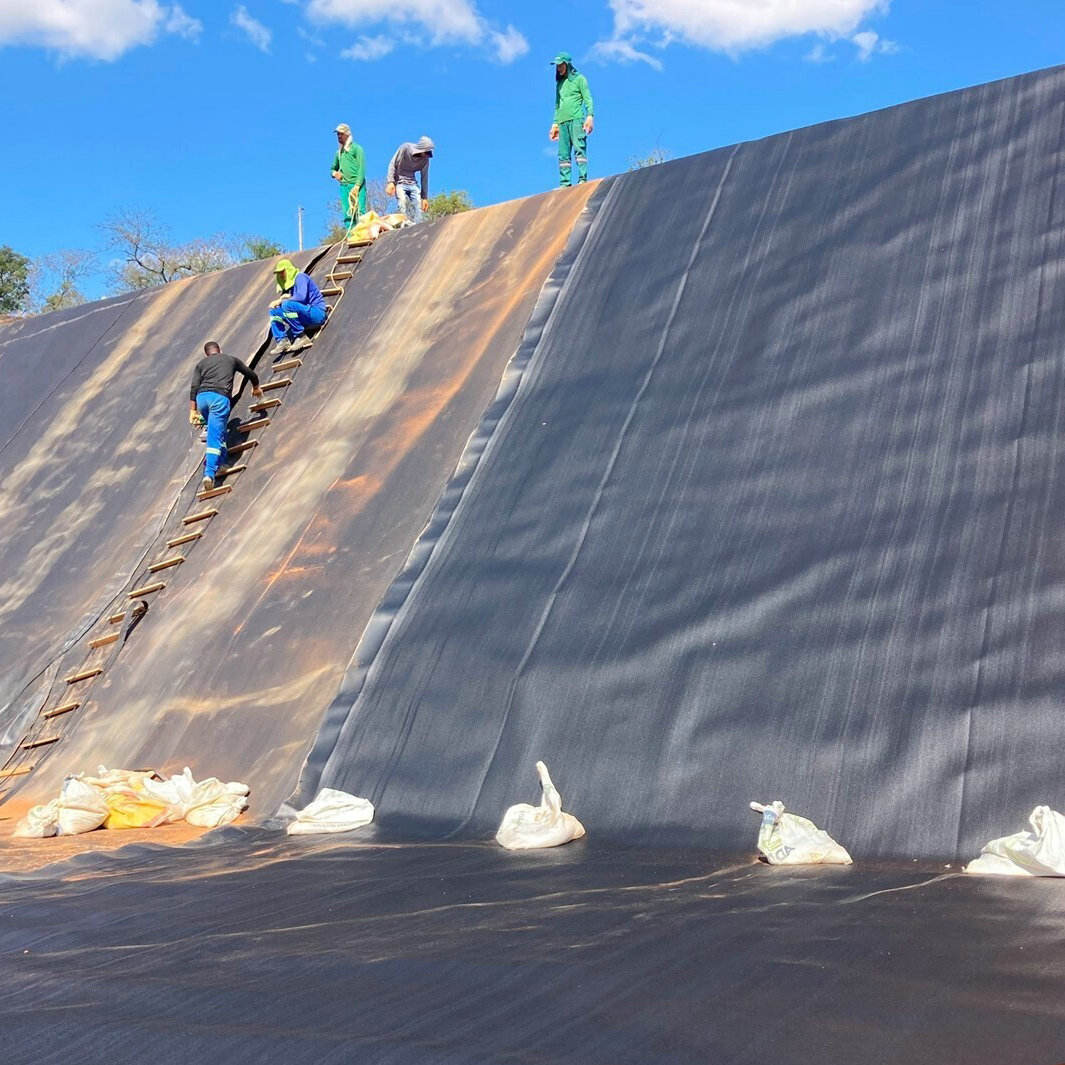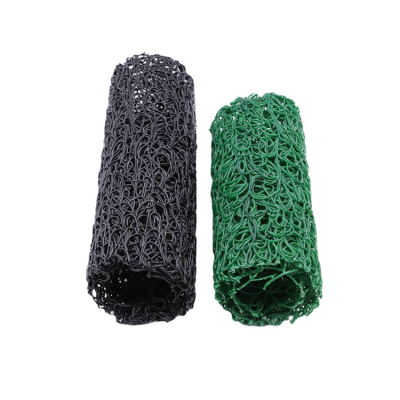"Invisible Guardians" in Extreme Weather: How Geomembranes Help Farmlands and Mines Avoid Leakage Crises?
Extreme Weather’s “Invisible Guardian”: How Geomembranes Help Farms and Mines Avoid Leak Disasters?
Over the past few years, extreme weather has gone from “uncommon” to “everyday.” In Thailand, monsoons in 2023 dumped three times the usual rain, turning rice field irrigation canals into muddy streams that leaked water faster than farmers could pump it in. In northern Canada, a gold mine saw its toxic waste pond liner crack after a sudden freeze-thaw cycle—spilling chemicals into a nearby lake and killing off local fish. For farmers and miners, these aren’t just weather events; they’re crises. Water loss, pollution fines, destroyed crops, lost livelihoods—all tied to one hidden problem: leaks. But there’s a quiet solution that’s been stepping in to fix this: geomembranes. And not just any geomembrane—geomembrane HDPE, a tough, adaptable material that’s become an invisible guardian for farms and mines facing extreme weather. Let’s break down how it works, with real stories from the people who rely on it.
1. For Farms: Stopping Leaks That Waste Water and Ruin Crops
Farming has always been at the mercy of the weather, but today’s extremes—record-breaking rains, scorching droughts, sudden temperature swings—make it even harder. The biggest hidden threat? Leaks. Whether it’s irrigation canals losing water to soggy soil, or storage ponds seeping fertilizer into groundwater, leaks turn small weather challenges into big disasters. That’s where geomembrane HDPE comes in.
Take Somchai, a rice farmer in Thailand’s Central Plains. For 15 years, he used traditional earthen canals to move water from the Chao Phraya River to his rice fields. “Before, when the monsoons hit, the canals would get so muddy the banks would erode,” he said, wiping sweat from his brow during a break from planting. “Water would leak into the ground faster than I could get it to the fields. Last year, I lost 20% of my rice crop because the seedlings didn’t get enough water—even though it rained nonstop. And when the sun came out later, the water in my storage pond evaporated so fast I had to buy extra water from a neighbor. It cost me thousands of baht.”
Somchai tried fixing it himself: piling more dirt on the canal banks, using cheap plastic sheeting from the local market. But the dirt washed away in the next rain, and the plastic melted in the sun within a month. Then a local agricultural supplier told him about geomembrane HDPE. “I was hesitant at first,” Somchai admitted. “It sounded like just another expensive plastic. But my neighbor tried it, and his crop didn’t fail. So I decided to line one canal and my storage pond with it.”
The difference was noticeable within weeks. The geomembrane HDPE’s smooth surface stopped the canal banks from eroding—no more mud, no more leaking. Somchai said he now loses less than 5% of his irrigation water, compared to 30% before. The storage pond’s water evaporation dropped too—he used to refill it twice a week during dry spells, now only once every two weeks. “This year, even with the monsoons and the hot spell after, my crop is healthy,” he said, grinning. “I didn’t have to buy extra water, and I even sold more rice. Geomembrane HDPE didn’t just save my crop—it saved my family’s income.”
It’s not just rice farmers. In Australia’s outback, where droughts can last for years, cattle rancher Mia uses geomembrane HDPE to line her water tanks. “We collect rainwater in tanks, but before HDPE, the dry soil soaked up so much water the tanks would be empty in three weeks,” she said. “During the 2022 drought, I almost had to sell my cows—my whole livelihood. Then I lined the tanks with geomembrane HDPE. Now the tanks hold water for months. I haven’t had to truck in water in over a year. My cows are healthy, and I even added more to my herd.”
What makes geomembrane HDPE work for farms? It’s impermeable—so water doesn’t seep through to the soil. It resists UV rays, so it doesn’t melt or crack in the sun. And it’s flexible enough to handle temperature swings, whether it’s the hot days and cool nights of Thailand’s dry season or Australia’s desert heat. “For farmers, it’s not just about stopping leaks,” said a representative from a Thai agricultural group. “It’s about predictability. With geomembrane HDPE, they don’t have to worry if the next rain will wash away their canals or if the sun will dry up their water. They can focus on growing food.”
2. For Mines: Preventing Toxic Leaks That Harm the Environment (and Bottom Lines)
Mines face a different kind of leak crisis: toxic waste. Most mines store byproducts like tailings (the leftover rock and chemicals from mining) in large ponds. If the liner of these ponds cracks—especially during extreme weather—the chemicals can seep into soil, groundwater, or nearby lakes. That’s not just an environmental disaster; it’s a financial one too. Fines, cleanup costs, and shutdowns can cost mines millions. Geomembrane HDPE has become the go-to solution here, too—especially in places with harsh winters.
Alex is the environmental manager at a gold mine in Yukon, Canada, where winter temperatures drop to -40°C (-40°F). A few years ago, the mine used a different type of liner for its tailings pond. “We thought it would hold up,” Alex said. “But one winter, we had a warm spell that melted the top layer of ice, then a sudden freeze. The water in the pond expanded when it froze, and the liner cracked. Within days, we noticed the nearby lake had a strange color. Tests showed it was contaminated with heavy metals from our tailings. We had to shut down part of the mine to clean it up, paid a $1.2 million fine, and lost months of production. It was a nightmare.”
After that, the mine switched to geomembrane HDPE. “We did our research—geomembrane HDPE is designed to handle freeze-thaw cycles,” Alex said. “It stays flexible even when it’s freezing, so it doesn’t crack when water expands. And it’s resistant to the chemicals in our tailings, so it doesn’t break down over time.”
Five winters later, the mine hasn’t had a single leak. “We check the liner every month, even in the winter,” Alex said. “No cracks, no seepage. The lake’s water quality is back to what it was before the spill. For us, geomembrane HDPE isn’t just a liner—it’s insurance. We can’t afford another environmental disaster, and this material keeps that from happening.”
It’s not just cold-climate mines. In Chile’s Atacama Desert, one of the driest places on Earth, a copper mine uses geomembrane HDPE to line its tailings ponds. “The desert heat can reach 45°C (113°F), and the soil is so dry it pulls water (and chemicals) from anything it touches,” said the mine’s operations director. “Before HDPE, we had small leaks every few months. Now, with geomembrane HDPE, we haven’t had a single issue. It holds up in the heat, doesn’t leak, and is easy to maintain.”
Mines also love geomembrane HDPE for its durability. Most liners last 20+ years with minimal maintenance—something that’s crucial for mines that operate for decades. “We don’t want to replace liners every five years,” Alex said. “Geomembrane HDPE is a long-term solution. It saves us money in the long run, and it keeps us on the right side of environmental laws.”
3. Why Geomembrane HDPE Stands Out in Extreme Weather
You might be wondering: What makes geomembrane HDPE different from other liners? It’s all about its properties—ones that are tailor-made for extreme weather.
First, it’s tough. Geomembrane HDPE is made from high-density polyethylene, a material that’s resistant to UV rays, chemicals, and temperature extremes. It doesn’t melt in 45°C heat or crack in -40°C cold. That’s a big step up from cheap plastic liners that fall apart in months or rigid materials that can’t handle freeze-thaw cycles.
Second, it’s impermeable. Unlike earthen banks or thin plastic, geomembrane HDPE doesn’t let water or chemicals seep through. For farms, that means more water for crops; for mines, that means no toxic spills.
Third, it’s low-maintenance. Farmers and miners don’t have time to check liners every day. Geomembrane HDPE only needs occasional inspections—wipe away debris, check for small tears (which are easy to repair), and that’s it. “I used to spend three hours a day checking my canals,” Somchai said. “Now I spend 30 minutes a month. That’s time I can use to work on my fields.”
And lately, it’s become more sustainable. Many manufacturers now make geomembrane HDPE from recycled plastic—old water bottles, shopping bags, and industrial scraps. “We’re turning waste into something useful,” said a spokesperson for a geomembrane company. “Farmers and mines care about the environment too. Using recycled HDPE lets them protect their operations and the planet at the same time.”
The Invisible Guardian We Need
Extreme weather isn’t going away. If anything, it’s going to get worse. For farms and mines, that means more leaks, more crises, and more uncertainty—unless they have a solution. Geomembrane HDPE might not be the most glamorous technology, but it’s the one that’s quietly keeping crops growing, mines operating, and the environment safe.
Somchai put it best: “You don’t see the geomembrane under the mud or water, but you feel its effects. My crop is better, my income is better, and I don’t stress about the weather anymore. It’s like having a guardian that works 24/7.”
For Alex, it’s about responsibility. “We have to protect the land we work on,” he said. “Geomembrane HDPE helps us do that. It’s not just a business decision—it’s the right decision.”
In a world where extreme weather is the new normal, we need more invisible guardians like geomembrane HDPE. It doesn’t make headlines, but it makes a difference—for farmers, for miners, and for the planet.







